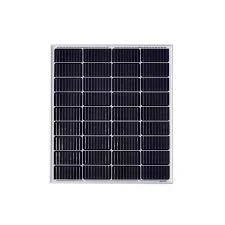Estimating the Total Quantity of Solar Panels Required for Efficient Energy Production
How to Calculate the Number of Solar Panels Needed for Your Home
As the demand for renewable energy rises, many homeowners are considering installing solar panels to harness the power of the sun. However, before making this investment, it is essential to determine how many solar panels you will need to meet your energy requirements. This article will guide you through the process of calculating the number of solar panels required for your home.
Step 1 Assess Your Energy Consumption
The first step in determining the number of solar panels is to evaluate your monthly energy consumption. You can find this information on your electricity bill, where it is usually measured in kilowatt-hours (kWh). Look for your average monthly usage; this figure represents how much energy you consume every month.
For example, let’s say your average monthly consumption is 900 kWh. This number will serve as the baseline for your calculations.
Step 2 Determine Solar Panel Output
Next, you need to know the energy output of the solar panels you plan to install. Solar panels are rated in watts, and the average efficiency of residential solar panels typically ranges between 250 to 400 watts. For the sake of this calculation, let’s assume you are considering panels rated at 300 watts.
To convert this wattage into daily energy output, you need to consider the amount of sunlight available in your area, typically measured in peak sun hours. Peak sun hours refer to the number of hours in a day when sunlight is strong enough to generate energy. Depending on your location, this can vary, but an average figure in the United States is about 4 to 5 hours of peak sunlight per day.
calculate number of solar panels

To calculate the daily output of a single solar panel, you can use the formula \[ \text{Daily Output (kWh)} = \text{Panel Wattage} \times \text{Peak Sun Hours} \div 1000 \] For our example, the daily output of a 300-watt panel would be \[ \text{Daily Output} = 300 \, \text{W} \times 5 \, \text{hours} \div 1000 = 1.5 \, \text{kWh} \]
Step 3 Calculate the Total Daily Energy Requirement
Next, convert your monthly energy requirement into a daily figure \[ \text{Daily Consumption} = \text{Monthly Consumption} \div 30 \] Using our previous example of 900 kWh \[ \text{Daily Consumption} = 900 \div 30 = 30 \, \text{kWh} \]
Step 4 Determine the Number of Panels Needed
Now that you have your daily energy requirement and the output of one solar panel, you can determine how many panels you need \[ \text{Number of Panels} = \text{Daily Consumption} \div \text{Daily Output} \] Using our figures \[ \text{Number of Panels} = 30 \, \text{kWh} \div 1.5 \, \text{kWh} = 20 \]
Conclusion
In this example, to meet a daily energy requirement of 30 kWh, you would need approximately 20 solar panels rated at 300 watts each, assuming an average of 5 peak sun hours per day.
Remember, these calculations are estimates and can vary based on factors like panel orientation, shading, and seasonal changes. It is also important to consider local regulations, potential incentives, and the condition of your roof before making a purchase. Consulting with a professional solar installer can help you refine these estimates and ensure that you make the most informed decision for your solar energy needs. By taking this step, you are not only investing in your own energy independence but also contributing positively to the environment.
-
Unlocking Energy Freedom with the Off Grid Solar InverterNewsJun.06,2025
-
Unlock More Solar Power with a High-Efficiency Bifacial Solar PanelNewsJun.06,2025
-
Power Your Future with High-Efficiency Monocrystalline Solar PanelsNewsJun.06,2025
-
Next-Gen Solar Power Starts with Micro Solar InvertersNewsJun.06,2025
-
Harnessing Peak Efficiency with the On Grid Solar InverterNewsJun.06,2025
-
Discover Unmatched Efficiency with the Latest String Solar InverterNewsJun.06,2025







